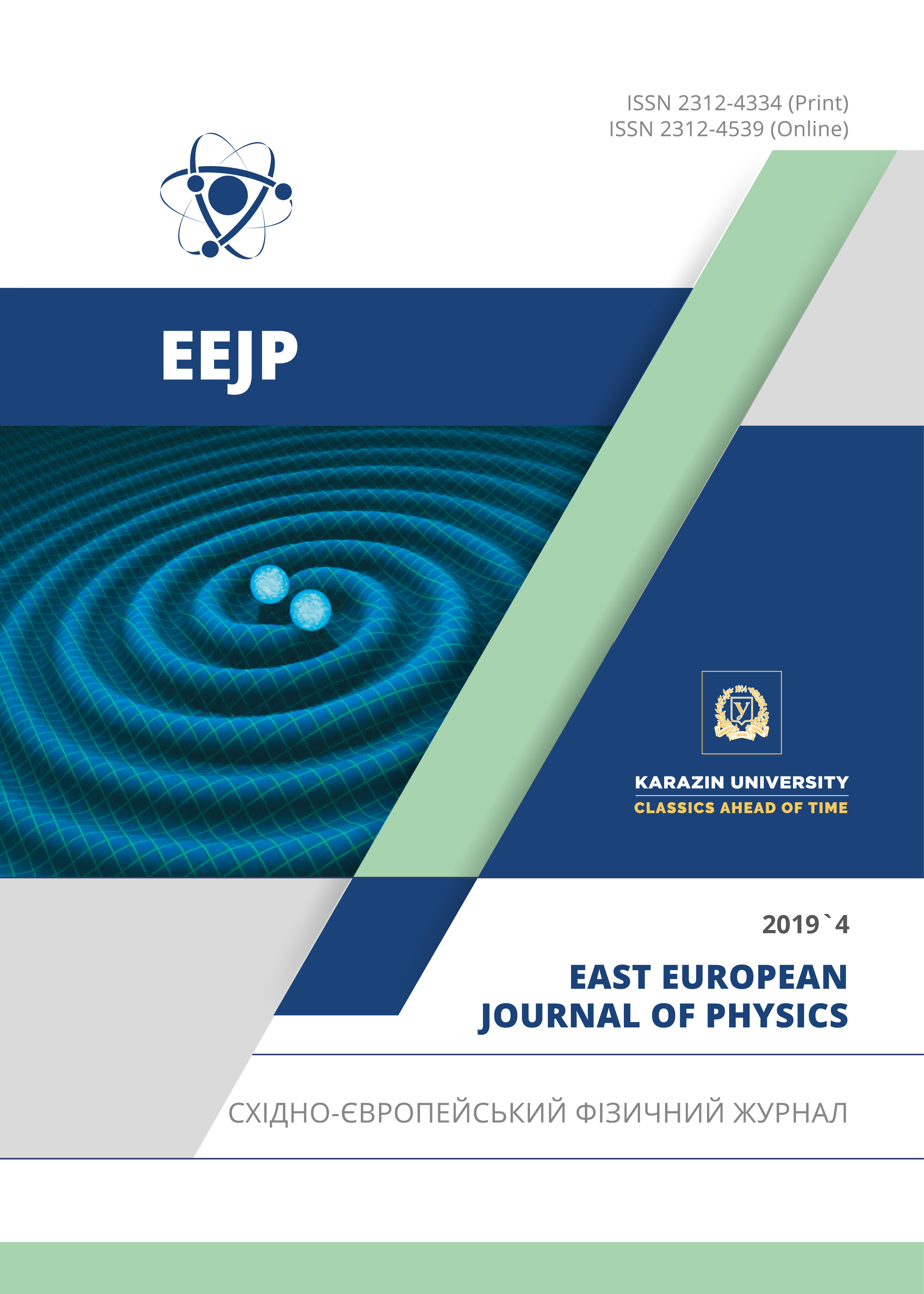The Stability of a Rotating and Heated From Below Horizontal Cylindrical Layer of a Viscous, Incompressible Liquid with Free Boundaries
Abstract
The stability of a rotating and heated from below horizontal cylindrical layer of a viscous, incompressible liquid with free boundaries was theoretically investigated. Neglecting the centrifugal forces, the equations of motion, thermal conductivity and incompressibility of the liquid were written, from which the well-known dispersion equation was derived in the linear approximation. The stability of a rotating cylindrical volume of a liquid with no heating from below was considered, provided that the temperature difference between the horizontal boundaries of the liquid was fixed and equal to zero. It was demonstrated, that with no heating from below the temperature difference between the horizontal boundaries of the rotating liquid was not fixed and not maintained from the outside, the perturbed liquid temperature would increase, but its final value did not exceed the phase transition temperature. The obtained result was used to explain the heating of water in Ranque – Hilsch vortex tubes. It was concluded that the water heating in Ranque -Hilsch tubes should be considered as the inverse Rayleigh problem, in which the temperature gradient can be determined from the known distribution of velocities inside the volume. The stability of a rotating cylindrical volume of a liquid when heated from below was analyzed. It was demonstrated, that the value of the specified temperature difference at cylinder boundaries, as well as the initial rate of its variation, determine the final heating temperature of the liquid. A comparison of the proposed theory and experimental data for water heating shows their good qualitative and quantitative agreement.
Downloads
References
H. Bernard, Revue generale des Sciences, pures et appliquées, 11, 1261-1271 and 1309-1328 (1900), retrieved from: https://gallica.bnf.fr/ark:/12148/bpt6k17075r?rk=21459;2.
J.W. Strutt (Lord Rауlеigh), Phil. Mag. 32, 529-546 (1916), https://doi.org/10.1080/14786441608635602.
L.S. Bozbei, B.V. Borts, A.O. Kostikov and V.I. Tkachenko, East Eur. J. Phys. 1(4), 49-56 2014, retrieved from: https://periodicals.karazin.ua/eejp/article/view/1442.
S. Chandrasekhar, Hydrodynamic and hydromagnetic stability, (University Press, Oxford, 1970), pp. 657.
G.Z. Gershuni and E.M. Zhukhovitskiy, Конвективная устойчивость несжимаемой жидкости [Convective stability of an incompressible fluid], (Nauka, Moscow, 1972), pp. 393. (in Russian)
Kh.P. Grinspen, Теория вращающихся жидкостей [Theory of Rotating Fluids], (Gidrometeoizdat, Leningrad, 1975), pp. 321. (in Russian)
L.D. Landau and E.M. Lifshits, Теоретическая физика, Т.6, Гидродинамика [Theoretical Physics, Vol.6, Hydrodynamics], (Nauka, Moxcow, 1986), pp. 736. (in Russian)
E.L. Koschmieder, Bénard Cells and Taylor Vortices: monograph on mechanics, (University Press, Cambridge, 1993), pp. 350.
Y. Nakagawa and P. Frenzen, Tellus, 7, 1-21 (1955), https://doi.org/10.1111/j.2153-3490.1955.tb01137.x.
N.A. Smirnova, Методы статистической термодинамики в физической химии [Methods of statistical thermodynamics in physical chemistry], (Vysshaya shkola, Moscow, 1982), pp. 455. (in Russian)
L.D. Landau and E.M. Lifshits, Теоретическая физика, T.5, Статистическая физика [Theoretical Physics Vol.5, Statistical Physics], (Nauka, Moscow, 1976), pp. 584. (in Russian)
A.P. Merkulov, Вихревой эффект и его применение в технике [Vortex effect and its application in technology], (Mashinostroeniye, Moscow, 1969), pp. 183. (in Russian)
A.D. Suslov, S.V. Ivanov., A.V. Murashkin and Yu.V. Chizhikov, Вихревые аппараты [Vortex devices], (Mashinostroeniye, Moscow, 1985), pp. 256. (in Russian)
Authors who publish with this journal agree to the following terms:
- Authors retain copyright and grant the journal right of first publication with the work simultaneously licensed under a Creative Commons Attribution License that allows others to share the work with an acknowledgment of the work's authorship and initial publication in this journal.
- Authors are able to enter into separate, additional contractual arrangements for the non-exclusive distribution of the journal's published version of the work (e.g., post it to an institutional repository or publish it in a book), with an acknowledgment of its initial publication in this journal.
- Authors are permitted and encouraged to post their work online (e.g., in institutional repositories or on their website) prior to and during the submission process, as it can lead to productive exchanges, as well as earlier and greater citation of published work (See The Effect of Open Access).








